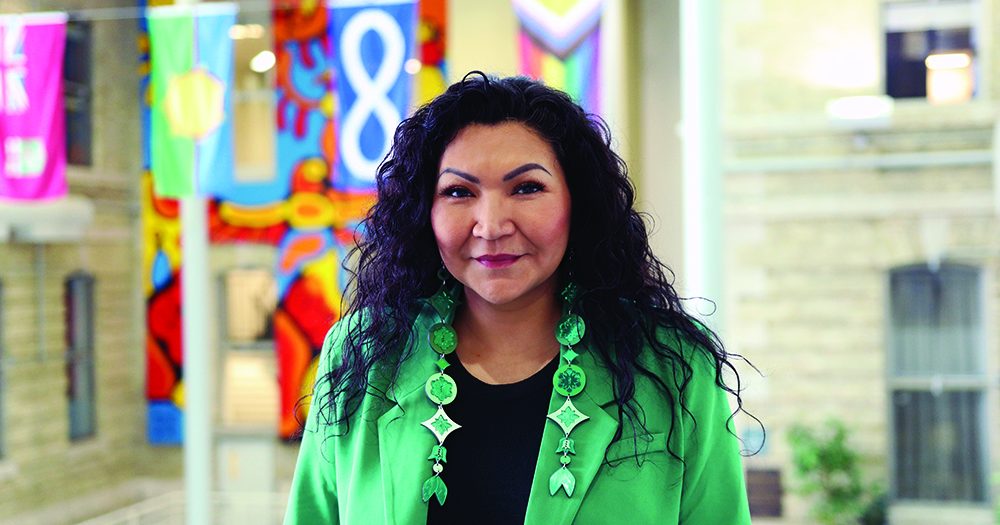
Margaret Hart’s [M.Ed./21] career took an unexpected turn when she joined the Rady Faculty of Health Sciences in 2022.
“When I was approached, I thought, ‘Can I really go from mathematics to health education?’”
Hart, originally from Pimicikamak Cree Nation in northern Manitoba, has more than 20 years’ experience in education. After earning her bachelor’s degree at Brandon University, she spent her early career as a teacher in northern communities, immersed in local languages and culture.
She then worked for more than a decade as a math specialist, helping to develop the Manitoba First Nation School System, Canada’s first culturally relevant, First Nations-led school system, launched in 2017.
In 2021, Hart completed her master’s in education and was approached by Debra Beach Ducharme [B.Ed/85, M.Ed/09], director of Indigenous health integration at UM’s Ongomiizwin – Indigenous Institute of Health and Healing, about joining the College of Rehabilitation Sciences as an Indigenous scholar.
Skeptical at first, Hart was soon drawn in by the collaborative work that college dean Dr. Reg Urbanowski was doing with communities. She was impressed by a health-and-wellness partnership, established in 2016, that has enabled the college to deliver rehabilitation services to more than 10 First Nations communities.
Part of that initiative involves meeting directly with community members to learn about their unique needs. “It’s an approach to service learning in which students engage with local people to shape the trajectory of the work,” Hart says. “Community-engaged learning is experiential, reciprocal and involves real-life application of course content.”
Today, Hart is the Rady Faculty’s first Ininiw (Cree) scholar, a role that she anchors in the Ininimowin knowledge system. In consultation with communities, she is transforming the occupational therapy curriculum to incorporate Indigenous ways of knowing, being and doing.
The revamped curriculum, expected to be in place in 2026, will incorporate philosophies based in the Ininiw language. Students will learn, for example, about storytelling, relational accountability, holistic wellness and cultural safety.
“Indigenous communities want to see culturally safe occupational therapists who understand their ways of healing and can identify gaps in health services that they experience, compared with other Manitobans,” Hart says.
Hart is now pursuing her UM doctorate in education, with a research focus on curriculum theory. She is preparing to publish a study based on the experiences of Indigenous scholars across Canada who are Indigenizing post-secondary curricula.
In another area of research, she is co-investigator (with Dr. Amine Choukou, associate professor of occupational therapy) on a project exploring Indigenous-friendly technology-assisted health systems.
Part of the project involves developing digital health approaches for elderly people in Pimicikamak Cree Nation – Hart’s home community – that could then be applied in other First Nations. Solutions could include remote-controlled telepresence robots and virtual reality that is programmed to use the community’s local language.
Hart says the first step is to understand the needs of older adults in the community, including what technologies they currently use, and then develop digital health solutions that are rooted in their knowledge systems and specific needs.
“Community engagement is what I’ve been doing my whole life,” she says. “This is what gives me purpose.”
BY ALAN MACKENZIE
